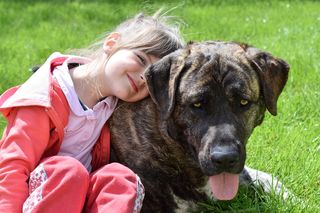Domestic Violence
The Link Between Violence Toward Nonhuman Animals and Humans
The tragic church shooting in Texas is another example of "the link"
Posted November 6, 2017
Updated November 9:
Gunman claimed to buy animals for practice
The relationship between violence toward nonhuman animals (animals) and human animals (humans), often called "the link" is well established (for scholarly essays please click here). I've written about this relationship in a number of essays, most recently focusing on New Zealand's war on wildlife in which youngsters are being taught in school and government-sanctioned events to harm and to call so-called pests.
(For more discussion please see "Long-Term Effects of Violence Toward Animals by Youngsters," "Imprinting Kids for Violence Toward Animals," and "Violence Toward Animals: 'Can You Please Help My Daughter?'")

In an essay called "Animal Cruelty and Antisocial Behavior: A Very Strong Link," I reviewed Eleonora Gallon's book Animal Cruelty, Antisocial Behaviour, and Aggression: More Than a Link that offers a comprehensive review of what we know about the link. She writes that 'the link' refers to the idea that 'acts of interpersonal violence are frequently preceded by, or co-occur with, acts of cruelty to animals, 'red flag' markers that previously were ignored."
On Sunday November 5, 2017, there was a horrific mass shooting in a church in Sutherland Springs, Texas. Not too long after this tragic event made national and international news, I received a few emails asking me if anyone had reported previous violence toward other animals by the alleged shooter. One person wrote, "I bet he has a prior history of animal abuse, just like so many of his ilk."
At the time I received these notes I couldn't find anything about prior animal abuse, however, just this morning in my local paper in Boulder, Colorado, I saw an essay by Kirk Mitchell called "Gunman who killed 26 people in Texas cited for cruelty to animals in Colorado." Mr. Mitchell writes that the suspect "was once cited for misdemeanor cruelty to animals, according to criminal and voter records." After he completed his sentence the charge was dismissed on March 16, 2016.
How robust is the relationship between violence toward animals and violence toward humans?
“Animal abuse does not inevitably lead to interpersonal violence but we must come to a better understanding of the circumstances in which it does – for the sake of both animals and people.” (Frank Ascione)
I talked with a few people about "the link" and just how robust and predictive the relationship between violence toward animals (VTA) and violence toward humans (VTH) truly is. While it's surely not 1:1 and prior VTA does not inevitably lead to VTH, many people see a very strong relationship, and the case of the alleged Texas shooter is another data point that can be added to the pile. Dr. Frank Ascione, one of the world's leaders in studying "the link," also agrees, and notes how both animals and people will benefit from learning more about it (you can read more about Dr. Ascione and his numerous books and essays here). Nonetheless, there are compelling data showing that there is a strong association between animal and human abuse.
One colleague and I talked about how to handle the information we have about "the link" so that profiling individuals who have been accused and convicted of animal abuse isn't misused. We agreed that while there is a "red flag," it's essential to gather more data and, as Dr. Ascione stressed, "we must come to a better understanding of the circumstances in which it does, for the sake of both animals and people." Unfortunately, but perhaps there is a silver lining to this dark cloud, some people in New Zealand are putting the relationship between violence toward animals and violence toward humans to the test by possibly imprinting youngsters toward violence toward animals. And, New Zealand does have significant problems with domestic violence.1
I hope that additional studies focusing on the link will clarify what's happening and hopefully generate robust predictive data that clearly separate correlation from causation. Right now we just need to pay extremely close attention to what we know and how it can be used, and move on so that both other animals and humans will benefit.2
1The website for Women's Refuge states, "Domestic violence is a major human rights issue across the world, and one of New Zealand’s most serious social issues. One in three women in Aotearoa will experience some form of abuse within their relationship, with many more coming dangerously close." Another report published in December 2014 calls domestic violence in New Zealand "an epidemic" while another essay published on March 21, 2017, notes that while there is much to be proud of in New Zealand, the fact is that New Zealand has "the highest rates of family violence in the developed world."
2For more discussion on this topic please see "Texas shooter’s history of cruelty fortifies case for new animal welfare laws."


